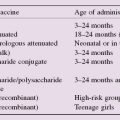The completion of the first complete DNA sequence of the human genome in 2003 was a landmark in the history of science. Remarkably, despite containing over 3 billion base pairs, the genome is believed to code for only around 20 000 genes, far fewer than most scientists had estimated. The function of much of the rest of the DNA remains unclear, although much of it is likely to be involved in regulating gene expression. An increasing number of genomes of other organisms (including of course the indispensable laboratory mouse) are already, or will be shortly be, available. Genome-wide comparisons between species are already providing fascinating new insights into the process of evolution. The next major phase of the genome project, to define the diversity of the DNA sequence within a species, is now under way. Current data suggest that the DNA sequences of any two humans differ from each other by an amazing 10 000 000 base pairs. The most common type of difference are called single nucleotide substitutions, or SNPs, (pronounced ‘snips’).
All this information has had a major impact on immunology, allowing rapid discovery of many new molecules involved in the interaction between the host and the pathogen. The figure shows the 22 human autosomes, plus the X and Y chromosome, stained with a DNA dye that gives a characteristic banding pattern known as the ideogram. Each band is given a number (e.g. 14q32 means band 32 on the long arm of chromosome 14, p refers to the short arm) which unambiguously identifies that region of the chromosome. The figure illustrates in green the ideogram positions of the genes that code for some of the most important molecules making up the human immune system, all of which are discussed elsewhere in this book. One striking discovery, illustrated in this figure, is the extent to which the immune system is made up of multigene families, which have presumably arisen by multiple duplication events. Many immune genes are also polymorphic. The extent of immune gene duplication and polymorphism (far greater than in most non-immune genes) is testament to the enormous selective pressure exerted by the microbial world during our past evolutionary history. Mutations in several genes have been associated with (often very rare) diseases affecting the immune system. The list is not exclusive, as new examples are rapidly being discovered. You can find information about any other gene you may be interested in by searching at the American National Centre for Biotechnology Information http://www.ncbi.nlm.nih.gov/projects/mapview/.
Knowledge of one’s own genome and of its likely gene associations will offer exciting and extraordinary possibilities, but also disturbing ethical challenges, to both the medical profession and the individual.
T-Cell Receptors
T lymphocytes recognize antigen using a two-chain receptor made up either of γ/δ or, much more commonly, α/β chains. These genes, like those of immunoglobulin, are unusual in that the complete gene is put together only during T-cell development by recombining different gene fragments (see Figs 10 and 12). Thus, T and B cells break the dogma that all cells carry identical genomic DNA sequences.
Stay updated, free articles. Join our Telegram channel

Full access? Get Clinical Tree




